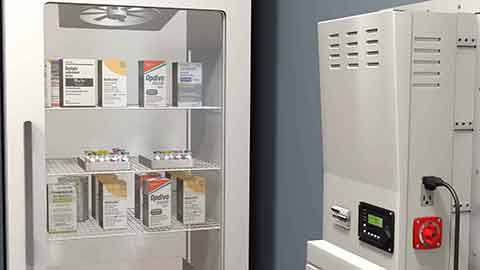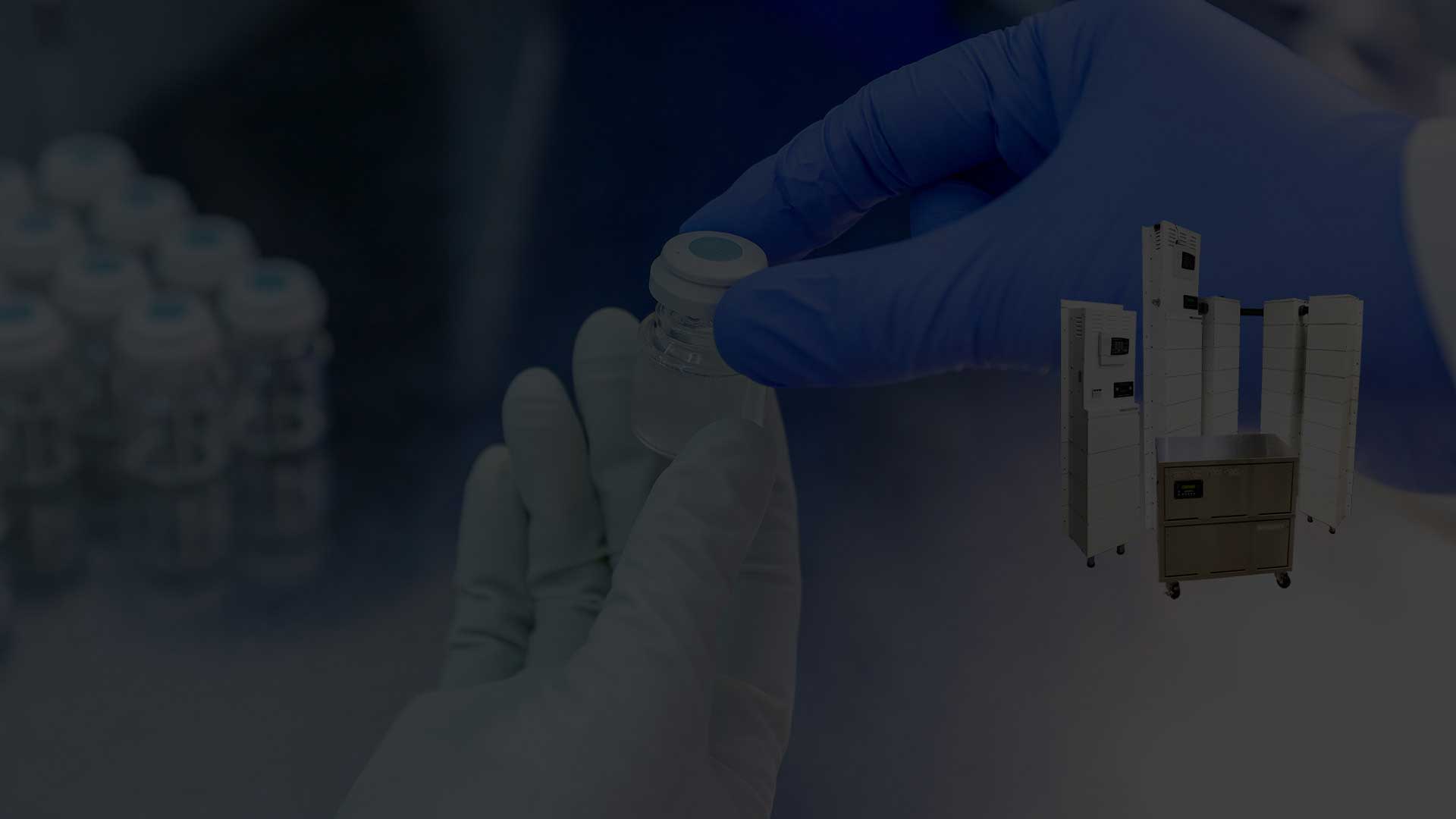How to Avoid Power Outages in Operating Rooms
Keeping power running in hospitals is a full-time job, and hospitals and surgery centers have their work cut out for them to maintain the power supply and ensure the health and safety of those who trust them the most—regardless of the type of surgery. This issue is at its most critical during extreme weather conditions when there are higher risks of power going out due to snowstorms, flooding, wildfires, etc and someone is on the operating table.
The threat of a power outage occurring in an active operating theatre is one of, if not the most crucial situation, in which healthcare facilities need the ability to instantly deploy backup power. The reason for this is quite simple — one only needs to imagine a scenario where a surgical team is performing an emergency C-Section or a patient that was just wheeled into the recovery room fresh from surgery, and, suddenly, the power goes out.
For these life-or-death situations, Medi-Products has spent almost thirty years engineering and providing custom emergency power solutions to healthcare facilities with our battery-powered rechargeable generators—and, as such, we have accumulated the hands-on knowledge needed in this scenario. Below, we will discuss best practices to observe during a power outage situation in a surgical setting as well as how having a reliable and instant source of backup power can help to mitigate any potential issues that may arise.
The Harmful Effects of Power Outages on an Operating Room
Healthcare facilities depend on power for the smooth running of their everyday operations. A plethora of Regulations demand that emergency standby power be available to sensitive areas in a healthcare facility, including operating room equipment and critical care units. These areas are sensitive because even a momentary power interruption could mean life or death for a patient—risking both their safety and the safety of the surgical staff.
AAAASF and The Joint Commission are just a few of the most prominent accrediting bodies that grant office-based and ambulatory surgery centers the certifications they need to be able to legally operate—generally requiring a minimum of 2 hours of backup power so that physicians and their staff can either complete their procedure or bring the patient to a stable state, at which time the procedure will be finished when power has returned.
Additionally, health care facilities keep electronic health records for their patients and rely on these records to provide the critical care patients need. These records typically contain data regarding a patient’s clinical status, medications, treatments, and other vital information, which may be necessary for the operating room.
Using Traditional Backup Power Systems During a Power Outage
Conventional backup power systems such as gasoline, diesel or natural gas generators are typically able to keep the power running in a facility's critical areas during an outage. Their advantages include the ability to deliver massive amounts of energy relative to their size, and a generally lower entry price. Unfortunately, this solution comes with a few challenges when deploying, such as:
- Design
- Capacity
- Maintenance
Design and Operational Disadvantages
Many gasoline-powered emergency power systems have design choices that make them a potentially inefficient solution for deployment in a healthcare facility. Some of these design issues are:
- The need to be installed outdoors and, thus, exposing the generator itself as well as whatever staff has been delegated to maintain and operate it to potentially hazardous weather—which may be causing the outage in the first place.
- The generators subsequently being unable to withstand the impacts of extreme weather conditions rendering them unable to operate and requiring expensive repairs thereafter.
- Commonly, transfer switches utilized by gas generators that safely take facilities off grid power and onto emergency power supply during the outage are operated manually and not automatic, requiring a dedicated staff member to make that transition quickly in order to avoid a difficult and lengthy outage.
- Due to the larger power and fuel requirements of a fossil-fuel powered generator, it may take upwards of 15 minutes for backup energy to be delivered even if an automatic transfer switch is integrated into the system—leaving your facility in the dark until it can fully operate.
Fuel Capacity and Installation Challenges
Few facilities have the capacity to install power generators large and powerful enough to keep operations running at full capacity for extended periods of time. And, because gas-powered generators need to be fed a regular and constant supply of fuel to operate, this only adds to the already challenging logistics of operating during a high-stress scenario such as a power outage. Moreover, apart from the high cost of such generators, they typically need to be installed in large spaces, which may be impossible for facilities located in leased buildings.
Maintenance and Storage Challenges
Gas generators operate in a manner very similar to a gasoline-powered car. Unsurprisingly, this means there will be a need for regular and expensive maintenance to ensure that they are in good shape and function when needed. Even with this preventative maintenance, these generators still have mechanical failures, and in the modern day and age of challenged supply chains and long wait time for replacement parts, these issues could potentially leave your facility vulnerable and scrambling for alternative options in order to maintain accreditation and continue to operate safely.
Additionally, due to the aforementioned need for a constant fuel supply, if you do not manage to burn through all of the fuel, additional challenges still exist. While you may be able to store fuel in your facility, a lengthy storage period can result in degradation and the need to replace that fuel even though it has yet to be spent. This creates a scenario where you have paid for fuel, will most likely need to pay to dispose of it, and will need to pay to replace it on top of the costs associated with dedicating staff and space and other resources to proper storage. In addition, you cannot predict when a power outage may happen, so this challenge with the fuel will be difficult to handle should you need to acquire more in a dire situation.
Tips and Best Practices for Handling Emergency Power Supply Issues
The best way to handle emergency power supply issues is preparedness. The following tips will help you with this, thus ensuring that your operating room keeps functioning during a power outage.
- Identify the critical areas of your facility that must continue running during a power outage, such as operating rooms, recovery rooms, etc.
- Identify the electrical devices that must continue running during a power outage. These are the devices that your backup power system will power.
- Get a list of backup requirements from licensing and accreditation agencies, as these will give you a roadmap to follow when setting up your facility’s SOP for preparedness.
- Keep your backup systems regularly maintained and test them often. An excellent way to do this is the Disconnect test, where you simulate a power outage to see how well your backup power systems respond to the event. This will help you note areas needing improvement and give you time to make the necessary changes.
As an alternative to gas-powered systems, Medi-Products' comprehensive line of battery-powered backup systems provide a low-maintenance and stress-free option for your facility's emergency power supply. Battery Backup Power avoids many of the pitfalls listed above by providing:
- Exclusively indoor mounting and operating locations
- Instant power delivery, switching your appliances to emergency power in milliseconds.
- The ability to power even your most resource-intensive specialized equipment such as operating tables and ultra-low temperature freezers—meeting the standards of whichever accrediting body will judge the compliance of your facility.
- A multitude of power delivery options including fully-integrated, direct-to-outlet systems, wall mounted units that provide direct power, as well as mobile, portable power stations with up to 8 AC power outlets which allow you to utilize as many tools as possible on-the-go.
Learn More About Your Backup Power Options
To answer even more of your questions on how to best operate your facility during a power outage, help you and your team find the perfect solution for backup power and discover additional solutions to problems that could affect your medical facility or laboratory, check out these other articles from the Medi-Products blog Including:
Protecting Life During Surgical Procedures When the Power Fails
Running an Oxygen Concentrator with a UPS Battery Backup System
How To Size An NFPA 99 Generator
Contact Us with any questions, concerns, needed advice or to get started immediately preparing your facility with the resources it needs to protect against the sudden and unknown danger presented from power outages.


